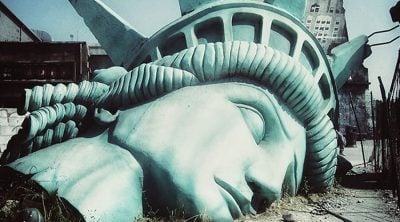The Elites Are Privately Warning About a Crash
by Jim Rickards, DailyReckoning:
 Many everyday citizens assume powerful global financial elites operate behind closed doors in secret conclaves, like the scene of a Spectre board meeting in the recent James Bond film.
Many everyday citizens assume powerful global financial elites operate behind closed doors in secret conclaves, like the scene of a Spectre board meeting in the recent James Bond film.
Actually, the opposite is true. Most of what the power elite does is hidden in plain sight in speeches, seminars, webcasts and technical papers. These are readily available from institutional websites and media channels.
It’s true that private meetings occur on the sidelines of Davos, the IMF annual meeting and G-20 summits of the kind just concluded. But the results of even those secret meetings are typically announced or leaked or can be reasonably inferred based on subsequent policy coordination.
What the elites rely on is not secrecy but lack of proficiency by the media.
The elites communicate in an intentionally boring style with lots of technical jargon and publish in channels non-experts have never heard of and are unlikely to find. In effect, the elites are communicating with each other in their own language and hoping that no one else notices.
Still, there are some exceptions. Mohamed A. El-Erian is a bona fide member of the global power elite (a former deputy director of the IMF and president of the Harvard Management Co.). Yet he writes in a fairly accessible style on the popular Bloomberg website. When El-Erian talks, we should all listen.
In a recent article he raises serious doubts about the sustainability of the bull market in stocks because of reduced liquidity resulting from simultaneous policy tightening by the Fed, European Central Bank (ECB) and the Bank of England.
He says stocks rose on a sea of liquidity and they may crash when that liquidity is removed. This is a warning to other elites, but it’s also a warning to you.
But it’s not just El-Erian who’s sounding the alarm…
You’ve heard the expression “the big money.” This is a reference to the largest and most plugged-in investors on Earth. Some are mega-rich individuals and some are large banks and institutional investors with a dense network of contacts and inside information.
At the top of the food chain when it comes to big money are the sovereign wealth funds. These are funds sponsored by mostly wealthy nations to invest a country’s reserves from trade or natural resources in stocks, bonds, private equity and hedge funds.
As a result, sovereign wealth fund managers have the best information networks of any investors. The chief investment officer of a sovereign wealth fund can pick up the phone and speak to the CEO of any major corporation, private equity fund or hedge fund in the world.
Among sovereign wealth funds, the Government of Singapore Investment Corp. (GIC) is one of the largest, with over $354 billion in assets. So what does the head of GIC say about markets today?
Lim Chow Kiat, CEO of GIC, warns that “valuations are stretched, policy uncertainty is high” and investors are being too complacent.
GIC allocates 40% of its assets to cash or highly liquid bonds and only 27% of its assets to developed economy equities.
Meanwhile, the typical American small retail investor probably has 60% or more of her 401(k) in developed economy equities, mostly U.S.
But it may be time for everyday investors to listen to the big money. They are the ones who see financial crashes coming first.
The bottom line is, a financial crisis is certainly coming. In my latest book “The Road to Ruin,” I use 2018 as a target date primarily because the two prior systemic crises, 1998 and 2008, were 10 years apart. I extended the timeline 10 years into the future from the 2008 crisis to maintain the 10-year tempo, and this is how I arrived at 2018.
Yet I make the point in the book that the exact date is unimportant. What is most important is that the crisis is coming and the time to prepare is now. It could happen in 2018, 2019, or it could happen tomorrow. The conditions for collapse are all in place.
It’s simply a matter of the right catalyst and array of factors in the critical state. Likely triggers could include a major bank failure, a failure to deliver physical gold, a war, a natural disaster, a cyber–financial attack and many other events.
The trigger itself does not really matter. The exact timing does not matter. What matters is that the crisis is inevitable and coming sooner rather than later in my view. That’s why investors need to prepare ahead of time.
The new crisis will be of unprecedented scale. This is because the system itself is of unprecedented scale and interconnectedness. Capital markets and economies are complex systems. Collapse in complex systems is an exponential function of systemic scale.
In complex dynamic systems that reach the critical state, the most catastrophic event that can occur is an exponential function of scale.
This means that if you double the system, you do not double the risk; you increase it by a factor of five or 10.
Since we have vastly increased the scale of the financial system since 2008, with larger banks, greater concentration of banking assets in fewer institutions, larger derivatives positions, and over $70 trillion of new debt, we should expect the next crisis to be much worse than the last.



